‘I am looking for a large family vehicle. I’ll be driving the car myself and specifically want an automatic. The car will see use in town and also on driving holidays outside. I’ve shortlisted the Toyota Innova Crysta but the Tata Hexa has caught my eye too. Is it a worthy alternative to the Innova? Do let me know your thoughts.’
We’ve received queries like this with reasonable frequency over the past few months. Sure, not every potential Innova buyer with the resources is interested in the Hexa but there are many who find themselves drawn to the big Tata. It’s a confidence boost as good as any for the team at Tata.
To put your doubts to rest, we’ve brought together the fully loaded diesel automatic versions of the Innova Crysta and the Hexa. On paper, the Hexa XMA has a significant price advantage (Rs 17.57 lakh, ex-showroom, Delhi, versus the Innova Crysta 2.8 ZX AT’s Rs 21.4 lakh), but it’s the Innova that has the larger and more powerful engine. There are a whole host of differences elsewhere too. Read on for the full picture.
The look of things
A large part of why the Hexa is getting the attention is for the way it looks. Longer and wider than the Innova Crysta, and suspended on large 19-inch rims, the Hexa has loads of road presence. The SUV-like details in its thick cladding and generally robust look only add to that.
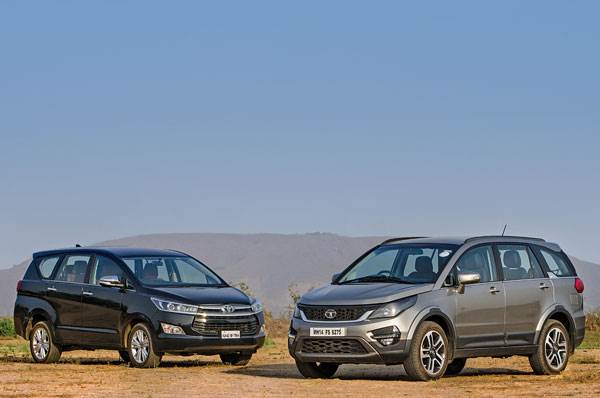
The Crysta looks imposing in its own right thanks to the large grille and big swept-back headlamps, and even the kink at the D-pillar brings in a dose of style. However, the overall shape and silhouette are traditional MPV. Also, the wheels look too small for Innova’s vast body. Furthermore, Toyota recently downsized the wheels to 16 inches (the test car had 17-inchers) because the earlier car’s lower tyre profile made it prone to punctures.
Inside story
If it’s the Hexa’s exterior design that got you interested in the first place, the cabin will keep you content too. Black is the dominant colour here and the dashboard design exudes understated elegance. Detailing is nice; there are plenty of soft-touch plastics and even the chunky switchgear adds to the feeling of quality. It’s a huge step up for Tata, but the used and abused press car we drove showed more signs of wear than the Innova Crysta with similar mileage.
The Toyota also gets dark interiors while the dashboard looks elegant. Faux wood and chrome find use in the Crysta but certain plastics are not in keeping with the price tag. But there’s no denying everything seems to be well built with precise panel gaps and a sense of durability.
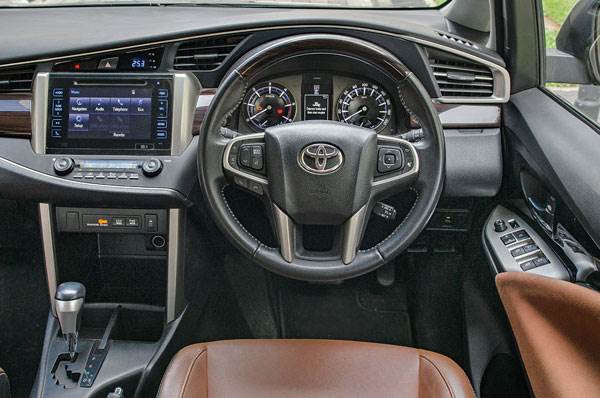
Front seat comfort is really good on both cars but there are differences. For one, the Hexa’s cabin is higher set, so ingress and egress isn’t as convenient as in the Innova. On the positive side, you get a more commanding view of the road from the Tata’s perch. The Tata and the Toyota both offer second row captain seats in their top variants (the Hexa can be had with a bench, too), and passengers will be comfortable in both thanks to the generous legroom. One irritant in the Innova is that if you recline the seats, the lower portion of the backrest protrudes into your lower back and that’s uncomfortable if you want to sit back and relax. What’s nice, however, are the picnic tables for those seated here. For a large family, though, the bigger point of interest will be the reasonably convenient access to the Innova’s third row. The one-touch mechanism to tumble the middle row seats forward is very convenient and space at the back is quite good too. It’s not half as easy to clamber into the back of the Hexa and it’s down on headroom to the Innova too, thanks to a hump on the roof. The Hexa does offer more kneeroom and it’s got the larger windows which translate into an airier feel in the cabin.
All the works
Both vehicles come with a fair share of equipment but it’s the pricier Innova that also has a few extra goodies on board. The Innova’s centre of attraction is the large 7.0-inch touchscreen for the infotainment system that is responsive and easy to use. Equipped with a DVD player and a navigation system, it offers a superior experience compared to the Hexa’s smaller 5.0-inch system. The touchscreen in the Tata isn’t as responsive and is also positioned fairly low down on the dashboard and hence is out of easy view. However, you do get some useful mobile apps for navigation, jukebox and remote control to make the most of the system. The Hexa’s pièce de résistance, though, is its 10-speaker JBL sound system which provides excellent sound quality. The Crysta’s system, while good, slightly pales in comparison.
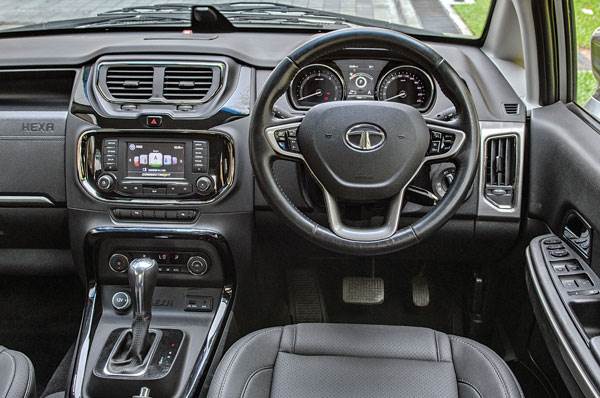
Both cars also get leather seats, cruise control, auto headlamps and ambient lighting, with the Hexa offering user-adjustable eight colour options and rain sensing wipers. Some extras on the Crysta are electric adjustments for the driver seat and an engine start/stop button Safety-wise, the Toyota edges ahead with an electronic stability programme and traction control (Hexa gets it on 4x4 MT only), Isofix points for child seats and seven airbags compared to the Hexa's six.
On the road
While the manual transmission-equipped Innova runs Toyota’s smaller 2.4-litre diesel engine, the diesel auto comes with a larger 2.8-litre unit making 174hp and 360Nm. The power figure is higher than the Hexa’s 2.2-litre diesel engine that makes 156hp, but with 400Nm on call, it’s the Tata that’s torquer. Like the Innova auto, the Hexa auto too uses a six-speed torque converter automatic with powersent solely to the rear wheels. The Hexa auto misses the manual’s all-wheel-drive hardware and drive modes, but truth be told, it’s still the pick of the Hexa range. And a lot of that is down to how well the engine and transmission complement each other.
The gearbox on the Hexa is quick-shifting and also has a very American-car slush gearbox fluidity with which it swaps ratios. Gearshifts are timely and make good use of the massive torque available to deliver a smooth driving experience. Performance is more than decent too, thanks to a linear spread of torque that builds up smoothly across its rev band. What’s more, noise levels are pretty well contained and the cabin is quieter than the Crysta’s at average speeds. For times when you do want more from the engine, you can switch to the gearbox’s Sport mode where shifts are delayed to make more use of the rev range. Manual gearshifts at the gear lever are on offer too, and you’ll be quite satisfied with the responsiveness of the system.
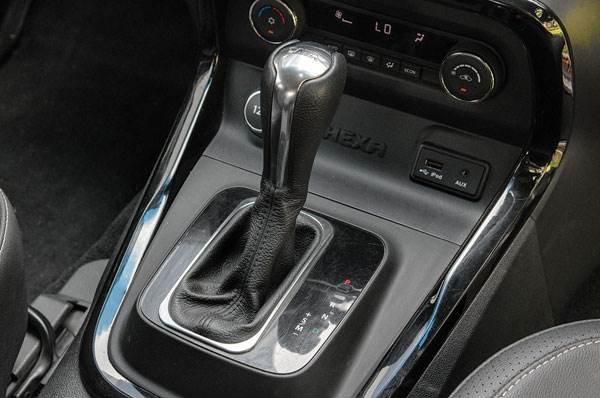
The Crysta not only gets a Sport mode for its gearbox but also gets two driving modes – Eco and Power – and there is a stark difference in engine response when either is engaged. Eco mode is suitable for relaxed cruising and economical driving, while you can actually feel the surge of torque in Power mode. What isn’t nice is the levels of engine noise. It can get pretty loud and obtrusive when revved and it’s not something you’d readily make your peace with at this price point.
The gearbox here is a quick responder and shifts gears fast and seamlessly. By default, the system upshifts early in the interest of fuel economy but switch to ‘Sport’ and it will delay shifts for a sportier feel. You can take manual control in the Innova too, but we aren’t fans of the old-school shift gate.
Coming to performance numbers, the Innova is quicker in the dash to 100kph and in kickdown acceleration too. However, the Hexa auto doesn’t necessarily feel slow at any point. Importantly, there’s little between the two models in terms of city fuel economy with the Hexa delivering 9.1kpl and the Innova delivering 9.2kpl. The Crysta does stretch each litre of diesel a bit further on the highway though. We got 13.2kpl in the Innova and 12kpl in the Hexa.
But be it in town or on the highway, the Hexa does feel its size. The steering is a touch too heavy at town speeds and there’s also lots of roll around high-speed corners. The Innova’s steering is heavy in its own right and there’s lots of lean around high-speed bends too, but on the whole, it feels more manageable and user-friendly. The Hexa does come back with a more absorbent low-speed ride and more surefooted straightline manners.
Tata or Toyota?
Rupees 4 lakh is a substantial sum of money at this end of the car market, so if the more affordable Hexa proved better than the Innova Crysta it would be quite the bargain. What’s impressive is that the Hexa does run the Innova close on many counts and even betters it in areas like ride comfort. But, money no object, our vote still goes to the Innova.
As a product, the Innova Crysta packs in slightly more punch across parameters to edge ahead of the Hexa, even if by a smaller margin than expected. However, what really tips the scale in its favour is the quality, reliability and dependability that are a part and parcel of the Toyota experience. Sure, Tata has improved on its traditional weak points in the ownership experience but it’s still a long way before you can get the same peace of mind as when buying a Toyota product. There’s just no denying the Innova
is expensive for what you get, but given the high resale value (the Hexa still has to prove its mettle there) you can expect even years down the line, the high initial outlay doesn’t pinch as much. Goliath wins. Again.
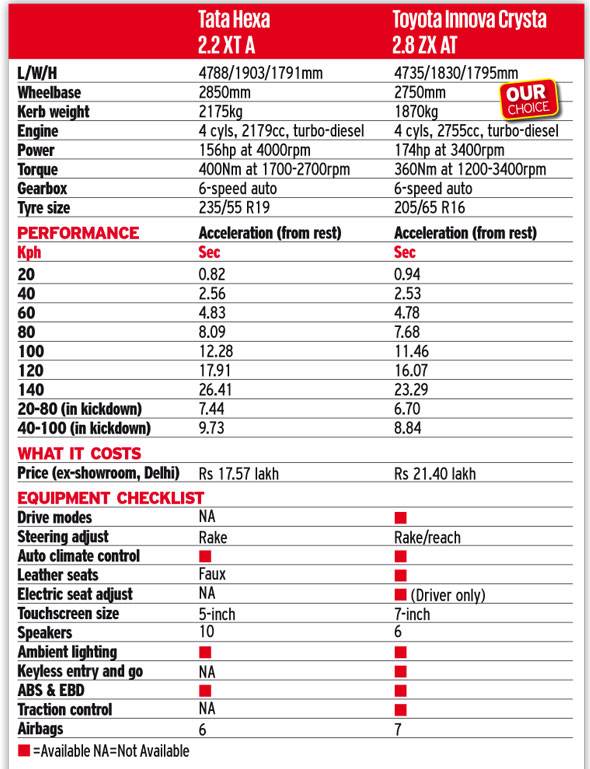

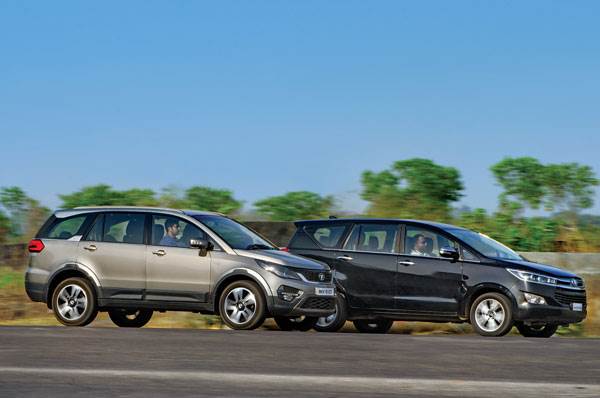
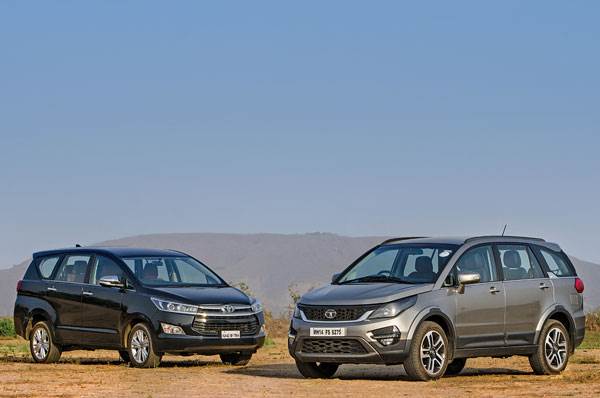

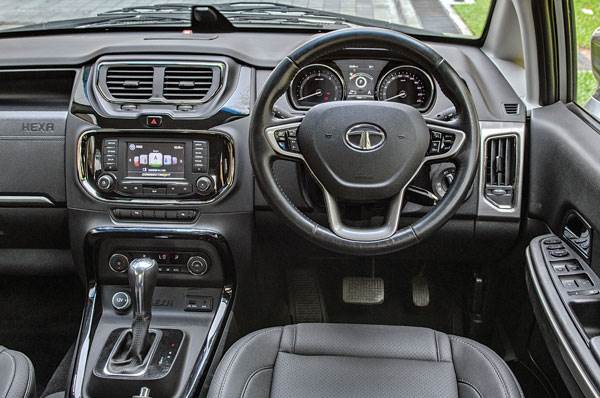


Comments
Member Login
Personal Details
No comments yet. Be the first to comment.